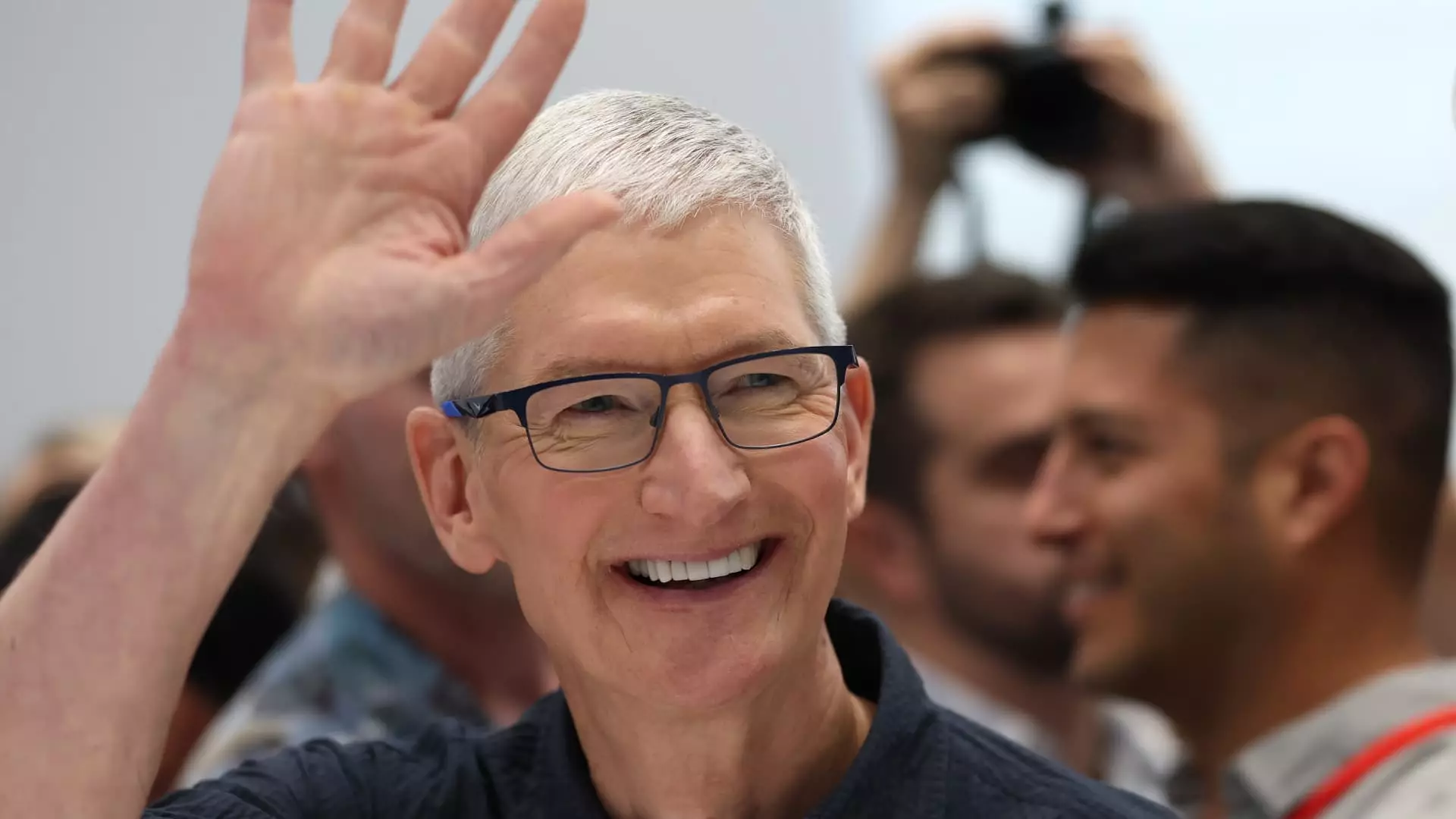In the ever-evolving landscape of technology and consumer electronics, Apple Inc. continues to captivate markets and investors alike. Despite recent skepticism from Wall Street analysts regarding demand for its latest device, the iPhone 16, Apple’s shares have soared to an unprecedented high. With a surge in iPhone shipments revealing unexpected strength and investor sentiment appearing cautiously optimistic, this article delves deep into the factors contributing to Apple’s remarkable resurgence.
A pivotal driver behind Apple’s stock rally is the recently released data from International Data Corporation (IDC), which indicated a year-over-year increase of 3.5% in iPhone shipments, totaling 56 million units. This exceeded the analysts’ consensus expectation of 50 million, suggesting a potential revenue increase ranging from $2 billion to $4 billion in this quarter alone. Such figures not only reflect a robust demand for Apple’s flagship product but also highlight the company’s resilience in a competitive smartphone market. Apple’s market share of 17.7% remains stable, closely trailing behind Samsung, which commands an 18.3% share.
Analysts, including Morgan Stanley, note that these numbers are significant as they signal possible upside in a business segment that is essential to Apple’s overall profitability.
The upcoming release of Apple Intelligence, a suite of generative artificial intelligence tools, marks an exciting threshold for Apple’s product line, particularly for the iPhone 16. As noted by Nabila Popal, IDC’s research director, older models such as the iPhone 15 have performed exceptionally well due to increased marketing efforts around this new technology. The anticipation surrounding Apple Intelligence is likely to influence consumers during the holiday season, especially those considering upgrades from older iPhone models.
While there has been speculation about the staggered rollout of these AI features in markets outside the U.S., the general expectation is that a significant number of customers will opt to upgrade, further driving sales and interest in the company’s consumer electronics.
Amidst the numerical successes, skepticism reigns on Wall Street about the iPhone 16’s demand. Analysts from major institutions such as JPMorgan, Barclays, and Bank of America recently expressed concern over lower shipping times for the new models, interpreting this as a harbinger of diminished consumer interest. This divergence of opinions illustrates the challenging narrative Apple faces; while some data points indicate optimism, others warn of potential weaknesses in consumer demand.
Yet, not all analysts are pessimistic. For instance, Evercore ISI has positioned Apple as a “tactical outperform,” suggesting that if the company meets investor expectations in its forthcoming earnings report, the stock could experience a significant rally. This contrasting outlook on Apple’s future adds complexity to the investment conversation surrounding the tech giant.
Apple’s recent stock climb also casts it in a competitive light against other major players in the tech field, notably Nvidia. While Nvidia recently reached a record market capitalization of $3.4 trillion, Apple maintains its lead with a valuation of approximately $3.55 trillion. This competitive atmosphere illustrates the high stakes of technology giants vying for supremacy in an increasingly crowded market. The ongoing narrative includes investor sentiments that could shift rapidly, depending on upcoming product releases and financial disclosures.
Jim Cramer, a noted figure in financial commentary, has emphasized the importance of focusing on the IDC data that contradicts the less favorable perspective held by some analysts. He maintains that despite trading at record levels, Apple has room for further growth as it capitalizes on the AI-driven upgrade cycle. As consumers increasingly seek cutting-edge technology integrated into their smartphones, the opportunity for Apple to drive sales through its AI-enabled devices appears promising.
Apple’s resurgence speaks volumes about its ability to thrive despite market challenges. The strong performance demonstrated by its iPhone lineup, bolstered by the anticipation of new AI capabilities, plays a crucial role in shaping investor sentiment. While Wall Street continues to grapple with mixed opinions regarding the future of the iPhone 16, the data hints at potential growth avenues for Apple. As the firm prepares for an eventful holiday season, investors will be keenly watching how the developments in generative AI and consumer demand translate into tangible sales figures, heralding a new chapter in Apple’s storied history.

